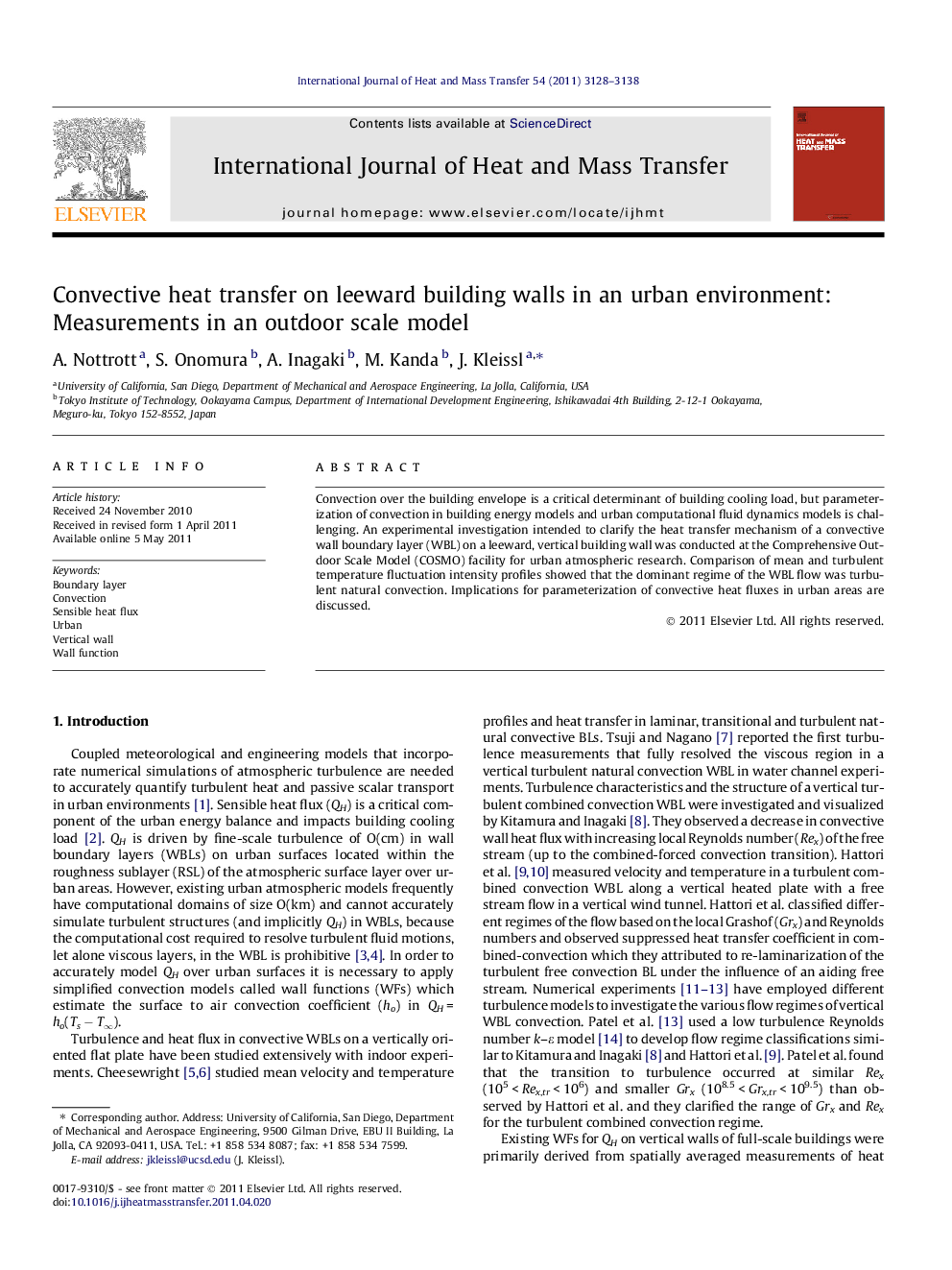| Article ID | Journal | Published Year | Pages | File Type |
|---|---|---|---|---|
| 659948 | International Journal of Heat and Mass Transfer | 2011 | 11 Pages |
Abstract
Convection over the building envelope is a critical determinant of building cooling load, but parameterization of convection in building energy models and urban computational fluid dynamics models is challenging. An experimental investigation intended to clarify the heat transfer mechanism of a convective wall boundary layer (WBL) on a leeward, vertical building wall was conducted at the Comprehensive Outdoor Scale Model (COSMO) facility for urban atmospheric research. Comparison of mean and turbulent temperature fluctuation intensity profiles showed that the dominant regime of the WBL flow was turbulent natural convection. Implications for parameterization of convective heat fluxes in urban areas are discussed.
Related Topics
Physical Sciences and Engineering
Chemical Engineering
Fluid Flow and Transfer Processes
Authors
A. Nottrott, S. Onomura, A. Inagaki, M. Kanda, J. Kleissl,
